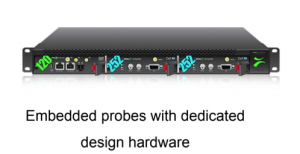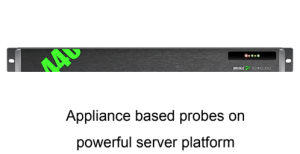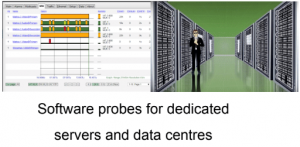Finding the perfect platform
June 25, 2021
What do the terms embedded, appliance and software-based mean to you?
One of the difficulties – but also pleasures – of working in the broadcast industry is knowing who you’re talking to. By that, what we mean is that the nature of the market has changed significantly. Where once we were a merry (or tragic?) little band of engineers talking tech-speak to each other, now the industry is much more diverse in its make-up: Disciplines are merging and executive decisions are taken on the basis of their business value rather than their technical detail (though very often, the two will go hand-in-hand).
The point we’re trying to make is, not everybody is quite as enamored with technobabble and engineering intricacies as we are. So, for example – when we say to you that all of our systems are now available on an embedded, server appliance or software basis, what would that mean to you? Would you nod your head knowledgably, gape perplexedly, or simply glaze over?
We’d hope not the latter – because the embedded versus server versus software debate is both interesting and important. In this month’s blog, we’re going to take things right back to basics – so we apologize to those who have been babbling about embedded blades and software stability since you were in diapers. But even if you know this topic inside out, there are still some interesting bits of information relating to specifically how (and why) we’ve addressed the hardware/appliance/software triumvirate, and how we’ve sought to harmonise the approach we’ve taken with each, bringing benefit across the board.
No such thing as ‘best’
For the entirely uninitiated: In monitoring (and indeed, in many fields) where you place your monitoring and measurement tools along the chain – and what you place there – can have a significant impact on what you can achieve and how you can achieve it. Whilst server-based solutions sit right at the heart of operations, embedded probes tend to dangle at the edges. And software solutions – well, they kind of hover above and around, wherever you want really.
So the obvious question to ask is: which is best?
You’ll be unsurprised to hear that actually, whilst obvious, that’s not the right question to ask at all. Even though the market goes through waves that tend to favour and push one approach over the other, the truth is that there is no best solution, only the most suitable one based on the context and goals of the application.
So with that in mind, here’s our quick and dirty overview to the benefits of software, server (also frequently called ‘appliance’) and embedded solutions. And we should note – if you’ve been keeping up with the Bridge Show, you’ll recognize many of the points from there. In fact, what are you wasting time reading this for – why not head on over and watch Rolf Ollmar and Simen Frostad, respectively CEO and Chairman of Bridge Technologies, talk about it far more engagingly than we can write about it: https://www.youtube.com/watch?v=AawUL9-ZWK0&t=1702s&ab_channel=BridgeTechnologiesBridgeTechnologies )
Embedded
 Embedded is where it all started for us. And whilst we – and the market as a whole – has made a big push to be able to centralise things through server applications, the truth is, there is still so much value to be leveraged from embedded probes.
Embedded is where it all started for us. And whilst we – and the market as a whole – has made a big push to be able to centralise things through server applications, the truth is, there is still so much value to be leveraged from embedded probes.
First and foremost, there’s the issue of power utilization. In a world where electricity is just a plug away, it can seem crazy that power draw is an issue (though the Texans are probably raising an eyebrow round about now). But the truth is, broadcast setups draw astronomical energy.
That may be fine and dandy in an established, fixed location that has the luxury of space, cooling and access. But as the industry pushes the boundaries of production and broadcast – particularly live – then the issue of power consumption becomes all the more pressing. When you consider that the draw of a server can run from anywhere between 200 to 1000 Watts, whilst a probe draws as little as 25 Watts, then suddenly – hanging off the side of a cliff half way up a mountain to broadcast the latest extreme sports extravaganza – that seems like big difference.
This means that embedded solutions are ideal in places where power might be difficult to come by, or where power is unreliable and battery back-up needs to be heavily relied upon. Indeed, in the aforementioned Bridge Show, Simen tells an anecdote of an Arm processor developer (Arm being the processors more frequently favoured in embedded solutions) who came back after dinner to continue his experiments and enter his data, and realized he hadn’t even powered the chip up – it was running off residual power! So that really tells you something about how low the draw can be in an embedded solution on the edge of a system.
There’s also a robustness to embedded solutions that is difficult to match. Probes are generally developed with a MTBF (mean time between failure) of 15 years, whereas it’s 5 – 7 for a server. This means that if your location is difficult to access for maintenance, or you’re simply looking to maximize reliability and efficiency, embedded is ya’ boy.
And the issue of space… well, that almost goes without saying. Server racks aren’t messing around – they’re pretty hefty – so anything that can be done to reduce space use, weight and heat generation is always going to be a plus.
Appliance/Server based
 Bridge has made a big push in what we’ve been able to do with server-based monitoring solutions in the last decade, and not to toot our own horn or anything, but it’s pretty impressive.
Bridge has made a big push in what we’ve been able to do with server-based monitoring solutions in the last decade, and not to toot our own horn or anything, but it’s pretty impressive.
First and foremost, with a server-based solution, you get some serious oomph. 100gig interfaces, 1000 ETR engines running in parallel, a monster of a processor: in essence, a full engine giving every layer of analytics you can need (or even imagine). For reach and depth, a server-based solution is almost always going to be the most comprehensive option.
Perhaps most significantly though, by centralizing your monitoring and production, you (rather paradoxically) maximize the extent to which you can engage in remote and distributed production. With the ultra-low latency that we’ve achieved and HTML5 access to our full range of monitoring metrics, you can have camera painters, sound engineers and all number of creatives tapping into the immense power of a centralized server, engaging in live production from across the globe.
There’s also the ease of the whole thing. With a server-based solution, you get a box of tricks all packaged up and ready to go – the closest you’ll come to plug-and-play. Whilst we frequently do a little tweaking and fiddling to meet the specific needs of our clients, in essence a server-based solution is going to give you a tried-and-tested, standardized and easy to deploy solution for both monitoring and production.
Of course, the downside of a server-based solution is really the flip-side of the advantages that come from embedded solutions; their beefiness makes them big and power hungry. But if you’re working an in environment that can accommodate that, well… then you can’t go wrong.
Software solutions
 In Rolf and Simen’s discussion, Rolf refers to these as the ‘free minded’ solution (though as Simen helpfully points out, that doesn’t mean you’re being thrown to the wolves, you’re never on your own with Bridge…). What Rolf essentially means is that a software approach makes it easier to adopt a specific and tailored installation, dropping in at any point along the chain and running from any appropriate appliance you already have – thus lowering both initial and running costs. You can even run from the cloud – which of course provides significant benefits in terms of the agility and distribution of your network.
In Rolf and Simen’s discussion, Rolf refers to these as the ‘free minded’ solution (though as Simen helpfully points out, that doesn’t mean you’re being thrown to the wolves, you’re never on your own with Bridge…). What Rolf essentially means is that a software approach makes it easier to adopt a specific and tailored installation, dropping in at any point along the chain and running from any appropriate appliance you already have – thus lowering both initial and running costs. You can even run from the cloud – which of course provides significant benefits in terms of the agility and distribution of your network.
Achieving unity
So, we’ve outlined the benefits of each of the three approaches. But, a further caveat is required. Not only is there no single ‘best’ choice between server, software and embedded – there is also the case that a ‘single’ solution is not necessarily right either. To gain insight across your full broadcast chain – from end to end – you may need to employ a combination of approaches.
Of course, we all know, adding more moving parts to any chain adds complexity. Surely, adding all three elements across a chain at different locations is only asking for trouble? Ah, but you forget our motto: making the complex simple.
It’s for this reason that we introduced ISM (Integrated Services Monitoring). This represents the pinnacle of our ability to provide end-to-end monitoring, with everything speaking and interacting seamlessly with each other. Coordinating our range of solutions – across RF, OTT, IP, terrestrial, cable and satellite, and allowing all to be undertaken on software, server or embedded probe – we are able to customize an approach to monitoring that accommodates the precise complexities of any broadcast chain, no matter how diversified or ‘multiplexitous’ (yes, we just made that word up, but we like it).
Core to this has been the harmonization of approach across each of the three platforms. Where once we developed a code for embedded solutions and moved this to our server solutions, now, with version 6 (V6), we’ve taken our incredible appliance-based developments and moved them across to our software and embedded probes. In essence, we’ve made them the same, but different. In the Bridge Show, Rolf refers to this as a ‘cross pollination’ across the products – maximising the feature-richness, reliability and stability of each, and ensuring seamless, harmonized performance across the full broadcast chain. It also ensures that the constant tweaking and incremental improvements we make can benefit every user, regardless of the platform (or platforms) they’ve selected.
So, if you didn’t know about software, server and embedded solutions before, you do now. And if you did already, then you now know Bridge’s perspective on their relative merits – and how we can maximize the benefits of each throughout the entire broadcast chain. But maybe you think differently? In which case, with a bit of luck, we can debate them with you in person at October’s NABShow and at December’s IBCShow – because if there’s one thing we love doing, it’s talking technology with like-minded friends, whether they’re engineering geeks or broadcast business whizzes.